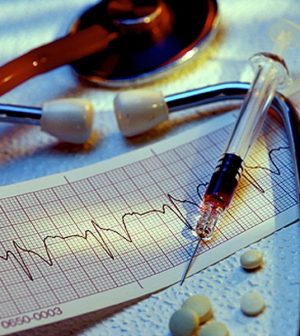- Skip Storing This Everyday Product in the Fridge Door
- Green Tea + B3 Pairing May Boost Brain Health
- Navigating Your Midlife Crisis: Embracing New Possibilities
- City Raccoons Showing Signs of Domestication
- Mapping the Exposome: Science Broadens Focus to Environmental Disease Triggers
- One Week Less on Social Media Linked to Better Mental Health
- Your Brain Changes in Stages as You Age, Study Finds
- Some Suicide Victims Show No Typical Warning Signs, Study Finds
- ByHeart Formula Faces Lawsuits After Babies Sickened With Botulism
- Switch to Vegan Diet Could Cut Your Greenhouse Gas Emissions in Half
Heart Groups Endorse New Class of Meds for Some Heart Failure Patients

(HealthDay News) – People who live heart failure with reduced ejection fraction can now turn to a diabetes drug to help them feel better, stay out of the hospital and potentially live longer.
Three leading heart organizations — the American College of Cardiology, American Heart Association and the Heart Failure Society of America — released new guidelines on Friday that added sodium-glucose cotransporter-2 (SGLT2) inhibitors to the list of heart failure treatments. These medications cause the kidneys to remove sugar from the body through urine. They have also been found to lower the risk of death in heart failure patients.
“When I discuss it with my patients, I explain that the evidence behind these recommendations is very solid. If you took 100 clinicians who were experienced and they looked at the evidence base, pretty much all 100 should come to the same conclusion that these are really recommended therapy,” Dr. Mark Drazner, president of the Heart Failure Society of America and clinical chief of cardiology at UT Southwestern, told CNN.
The other classes of medications for this condition are ACE inhibitors, angiotensin receptor blockers (ARBs) and ARN inhibitors, beta blockers and antimineralocorticoids.
Will your doctor be talking over the new drug option at your next appointment? Maybe not, Drazner said, because there are often delays in real-world implementation of new treatment recommendations.
“There’s a gap between the guideline recommendations and what the people in the country are actually getting treated with,” Drazner said. “Unfortunately, many patients don’t get on the highest level recommended therapy.”
In heart failure, the heart’s weakened muscles cannot pump blood as well as they should. Ejection fraction measures the ability of the left ventricular compartment of the heart to squeeze. With normal functioning, that ejection fraction is higher than 50%. Anything below 40% is considered reduced.
The revised guidelines suggest an SGLT2 inhibitor as a treatment option for people whose ejection fraction falls between those two numbers, and for those who have ejection fractions of 50% and above, called preserved ejection fraction.
Heart disease is the leading cause of death in the United States. More than 6 million Americans have heart failure, according to data from the U.S. Centers for Disease Control and Prevention. Heart failure was responsible for about 8.5% of the 400,000 deaths from heart disease in 2018.
Having hypertension, diabetes or hardened arteries puts someone at risk of the disease.
The guidelines also added new terminology, including “pre-heart failure” to describe people who have no symptoms of heart failure but show evidence of structural heart disease or higher levels of cardiac disease biomarkers. These include the protein known as brain natriuretic peptide (BNP), which is released into the bloodstream when the heart can’t pump enough blood.
The guidelines also recommend that anyone with advanced-stage heart failure get care at a specialized advanced heart failure center.
More information
The U.S. Centers for Disease Control and Prevention has more on heart failure.
SOURCE: CNN
Source: HealthDay
Copyright © 2025 HealthDay. All rights reserved.










